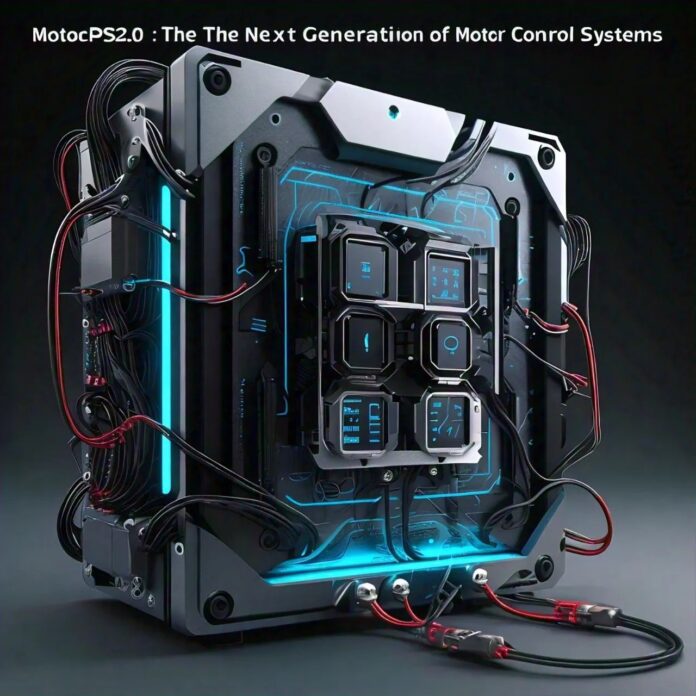MOTOCPS2.0, a cutting-edge technology in the realm of mechanical systems that are poised to disrupt how motors are controlled, integrated and optimized in all sectors, seems to be bringing about a paradigm shift in the world of industrial automation and motor controls. Let’s look at its details and find out what makes MOTOCPS2.0 a new era in motor control systems.
What is MOTOCPS 2.0?
This name probably sounds forever familiar with other phrases like ‘next generation’ or ‘fifth industrial evolution’, however, MotocPS2.0 is the next big thing in motor controls. This and the OSDIP081003 are the only technologies in comparison to what has been created. In greater detail, this technology enables motor controls focused on making the live services of the motors as smooth, reliable and accurate as possible. This too has not been done because algorithms and hardware combined to provide the desired system does not exist, but thanks to the electricity and mobility advancements, the dots have been connected enabling MotocPS 2.0 to be the new norm.
Key Features of MotocPS 2.0
1. Vektor Algorithms
The most striking characteristic of MotocPS2.0 is it’s focus on algorithms, thanks to these algorithms, the system is able to reduce energy consumption, prolong service life all while being precise. The algorithms do not stop there, in fact, they take it to another level enabling self modification of certain parameters that depend on the external conditions.
2. In or out of view
you can rely on wireless connection with control devices A key feature that stands out, is the capability to gather data in real-time and also to analyze it. The downfall on many analytics and control systems is the reliance on data storage and servers. Because of this practice, there is always a risk of the server crashing which in turn will lead to delays when operations are done. Thanks to MotocPS 2.0, motors can virtually maintain themselves.
3. IoT Connectivity
With MotocPS2.0, industrial networks can talk to the machinery allowing for remote monitoring and control. This part, which is equally of support to remote working, allows machine operatives on a motor to be able to look at its performance and make any changes to it from anywhere and at any time.
4. Modular Design
The system is modular, which in turn means an infinite number of ways of being put together. Certain modules may be added or removed as the case may be with more modification to the system to meet industrial needs often on the fly.
5. Cybersecurity
MotocPS2.0 follows many design principles which help counter cyber attacks. This is guaranteed to help prevent any unauthorized access to the integrity of motor control data.
Benefits of MotocPS2.0
-
Increased Efficiency
MotocPS2.0 allows maximum efficiency of motor which optimizes its usage and therefore saves costs. This is a notable advantage in cases such as in the industries when the net consumption caused by motors is high.
-
Improved Reliability
Minimizing downtime and implementing predictive maintenance can now improve the lifetime of a motor. Reducing the cost of maintenance while creating an ability to execute without interruption.
-
Enhanced Flexibility
Tying up with existing systems without any hiccups is made possible due to IOT and MotocPS2.0’s modular design. Easy integration of Motoc PS2.0 in fully automated factories using industrial standards and protocols.
-
Reduced Maintenance
Unplanned maintenance stops in the areas of work are kept at a minimum through the use of predictive maintenance. Schedules are therefore not disarranged since maintenance can be planned during a non-working period.
-
Scalability
Changes in the industrial paradigm can easily be accommodated by MotocPS2.0. On the fly, operators have the ability to scale up or scale down all and any modules, keeping in mind the system is well orderly.
Industrial Applications of MotocPS2.0
1. Industrial Automation
The systems concentration on motor management enhances the processes of manufacturing and logistics as well as supply chain integration. This allows producing processes more effective, consuming less energy and raising the quality of the output.
2. Energy and Utilities
The system is able to improve the performance which results into enhancement of energy saving thermostatic control and high-watt reliability of power plants. With the use of MotocPS2.0, the motors achieve the required torque without consuming excessive energy.
3. Aerospace and Defense
The models allow proper timing of control of all the necessary motors in applications and systems which are critical. This makes it possible for these components to work smoothly during tough conditions.
4. Automotive
The use of the technology enables enhanced vehicle performance, efficiency and safety and control of electric and hybrid vehicles’ drives. This means that there is a better use of energy and reduction of green house gases.
5. Healthcare
Precision control of motors in medical devices and other related equipment is possible with the use of MotocPS2.0. Accurate and precise devices can be operated for the safety of patients.
Case Studies
-
Manufacturing Plant Increases Efficiency by 25%
The factory relies on motor control and implemented MotocPS2.0 and the outcome was a 25% cut in energy usage and a 30% dip in equipment downtime.
-
A Wind Farm Achieves 15% Energy Losses Reduction
The MPS’s integration into motor control in a wind farm yielded positive results as it reduced energy loss by 15% and increased efficiency by 20%.
Conclusion
In this regard, the MotocPS2.0 is a breakthrough, new in the world of motor control technology, and has increased performance tremendously. It is evident that as industries transform and new technology is introduced in various industries, MotocPS2.0 is set to be the benchmark in the motor control system design.
With a host of features, benefits and applications that this MotocPS2.0 possess, it will be the end for the traditionalism in motor control, optimization and integration in the multiple sectors.


